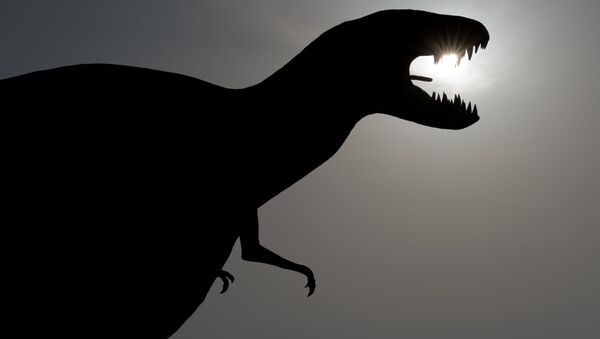In a study published Wednesday in the Proceedings of the Royal Society B journal, researchers say the dinosaur is the biggest specimen of all large dinosaurs dubbed "titanosaurs."
— Dr Ben Garrod (@Ben_garrod) August 8, 2017
"There was one small part of the family that went crazy on size," Diego Pol, co-author of the study, said of the fossils first discovered in Argentina’s southern region of Patagonia back in 2012.
According to researchers, the long-necked, plant-eating dinosaur roamed Earth about 95 to 100 million years ago, during the Late Cretaceous period.
"I don’t think they were scary at all," Pol said of the giants. "They were probably massive big slow-moving animals."
— David Ian Bruce (@IanIanpyke) August 9, 2017
While how the extinct dinosaur got so big is still unclear, some officials speculate that it had to do with an explosion of flowering plants at the time. In theory, the Patagotitans’ forest habitat provided such a vast buffet line that they just kept getting bigger and bigger.
Averaging 122 feet long and nearly 20 feet high just at the shoulder, the mammoth plant eater easily made scary Tyrannosaurus rex "look like a munchkin," Pol said. He likened the size comparison to that of an elephant and a lion.
The cast of the dinosaur’s skeleton is currently on display at the American Museum of Natural History, but beware, museum officials say the creature is so large its head sticks out into the hallway.
"It has become as iconic as the Blue Whale and attracts selfies from visitors," Roberto Lebron, the New York museum’s spokesman, told the New York Daily News.
— Paolo S. Macasaet (@paolosmacasaet) August 9, 2017
Researchers came up with the not-so-little guy’s name after mashing up "Patagonia" with the Greek word "titan," which means large. The second half of the name comes from the Mayo family, which owns the ranch where the fossils were excavated.

